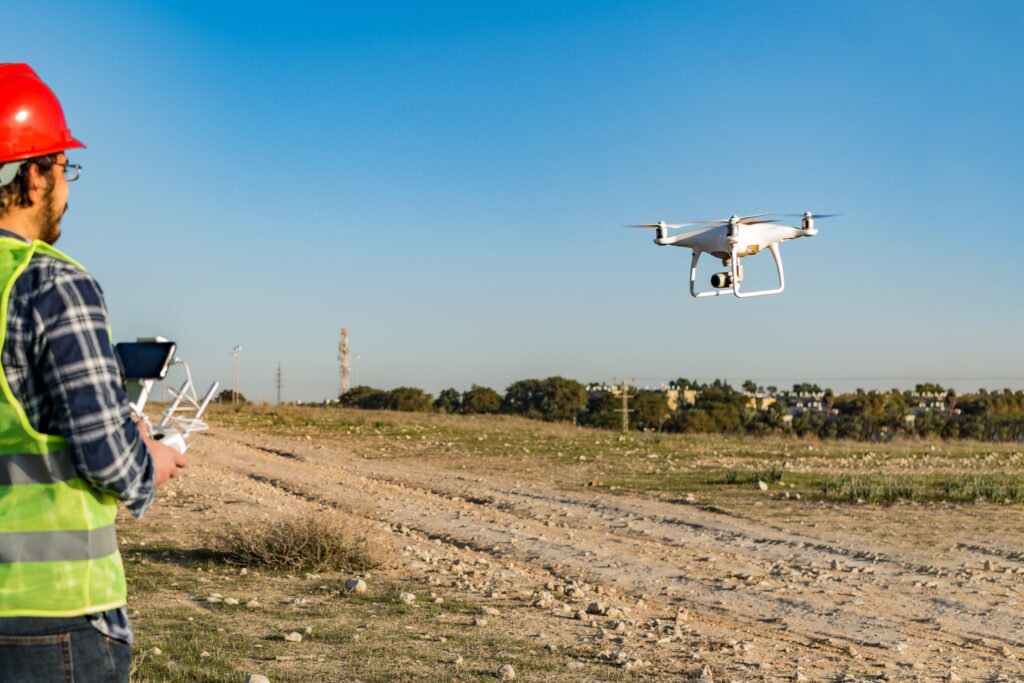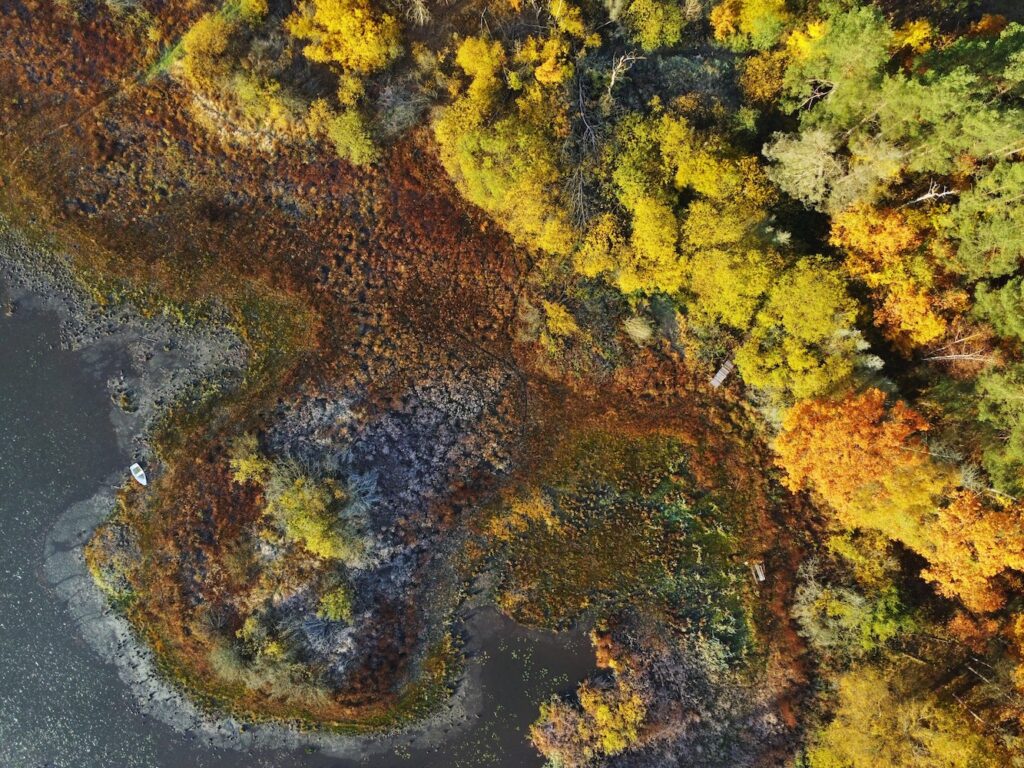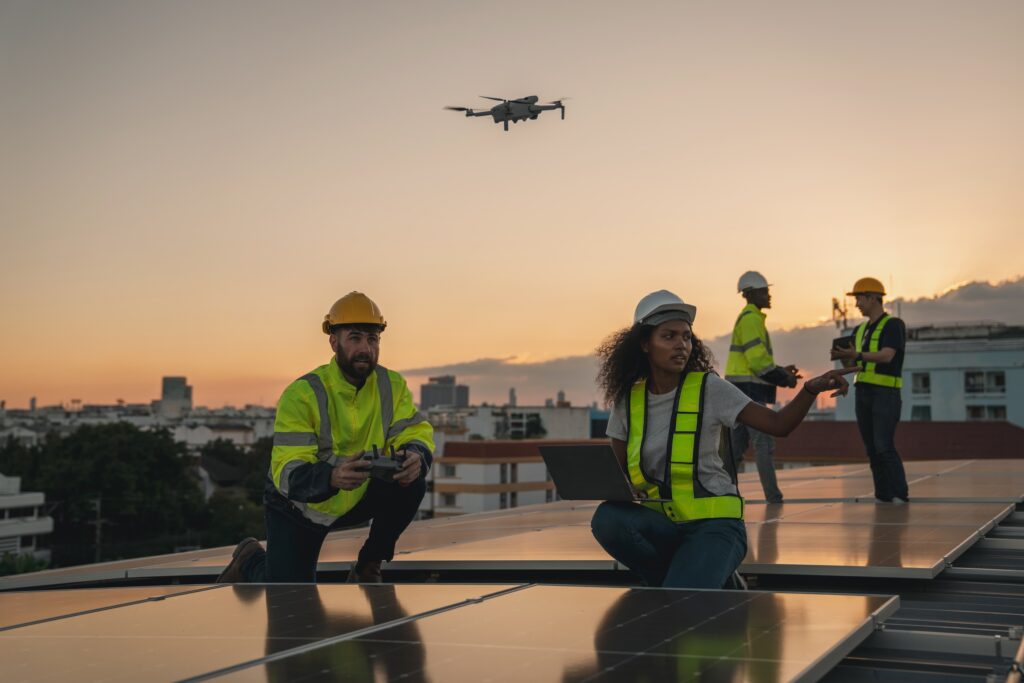A drone is the common term for an unmanned aerial vehicle (UAVs), which is an aircraft capable of operating without an on-board pilot or crew. Most people may believe drones were birthed with twenty-first-century technology, but the autonomous aircrafts we think of today were born from the idea to use explosive helium balloons in the nineteenth century, in a conflict between present-day Venice and Austria.
Although most research and technological advancement of drone technology has been funded by the military, creative thinkers have seen the possibility for the use of drones in art, filmmaking, and science. The use of a drone will apply in almost any task that can be completed from the sky, including using drones for topographic mapping. Utilizing a drone for topographic mapping enables a surveyor to gather data about large areas or areas in which manual field work would be challenging, dangerous, or exorbitantly expensive.
In this article we will cover:
- Drone topographic survey technology
- Accuracy of drone topographic mapping
- Cost of drone topographic mapping
- Best drones for topographic surveys
- More surveying information

Drone topographic mapping technology
Topographic mapping with drones is a type of remote sensing, in which information is acquired from a location without physical contact with the object under observation. While remote sensing can be either passive or active, topographic mapping with drones utilizes an active collection method, using RGB sensors, photogrammetry, multi- or hyper- spectral cameras, thermal sensors, or LiDAR technology (Light Detection And Ranging).
LiDAR Surveying
LiDAR sensors function by sending intermittent waves of light (typically infrared light) into the target environment, then measuring the speed at which each pulse of light is reflected from an object back to the sensor. The difference in time between the light wave’s emission and its return is used to estimate the position and elevation of points and objects on the designated area of land, and these points are recorded as a point cloud. The computing company IBM, who produces LiDAR technology, has published a detailed summary on different aspects of and uses for LiDAR technology. One interesting detail is that different laser-types are needed for measuring surface topography versus underwater topography, due to the way light bends and refracts in water.
Orthomosaic Mapping
A 3D orthomosaic map is created by compiling many digital photos of the surveying site, which can then be used to create topographic data.
Thermal Mapping
As the name suggests, thermal surveying images are used to map heat signatures onto a landscape.
Multispectral Mapping
Often used in the agricultural industry to measure the health of crops, multispectral cameras capture data from multiple wavelengths of the electromagnetic spectrum, beyond the visible light spectrum.
Drone topographic mapping accuracy
Drones are capable of creating scalable maps at centimeter-level horizontal and vertical accuracy. In order to ensure this degree of accuracy, the most effective drones are equipped with Real-Time Kinematic Positioning (RTK), which enables the drone to check and correct the measurement of its own position in the air relative to the target position. For survey-grade accuracy, the survey environment should also include Ground Control Points (GCPs), which are geographic points determined by or created in the field and used to geo-reference the imagery and data created during a survey. The United States Geological Survey (USGS) maintains a data directory of GCPs for use in surveying.
LiDAR Survey Accuracy
The laser waves of aerial LiDAR technology offer the most precision when compared to the other technologies mentioned above. However, this high accuracy can only be obtained by ensuring that the LiDAR system is accompanied by technology to accurately measure space and time, and these systems should be regularly recalibrated. Additionally, the process to translate the infrared point cloud into a three-dimensional topographic map requires precision in data cleanup, data analysis, and modeling, which is influenced by the skill of the technician working with the data as well as the functionality of the algorithmic programs used.
Photogrammetry Survey Accuracy
When using photogrammetry methods, such as with RGB, thermal, or multispectral sensors, camera settings like focus, exposure, and shutter speed can significantly impact the quality of the output; therefore it is important to hire an experienced drone operator, licensed by the Federal Aviation Administration. As with any topographic map, the accuracy and quality of the work is impacted by the expertise of the surveyor, so choosing the best surveyor for your topographic surveying is an essential first step.

Drone topographic mapping cost
The cost of an aerial topographic map completed by drone varies by the size of the area to be surveyed and the scope of work needed for the resulting image. One company, Florida Aerial Survey Technologies, quotes a general price range between $30 and $120 per acre surveyed; although these prices may not translate to other states. Regardless, when estimating the budget for a survey, keep in mind that a lower price range will apply to a product with less detail, such as a simple point cloud or photographs for a 3D model. The higher price estimate per acre is more appropriate when the client requires more precise tolerance (measurement accuracy) or more detail, such as contour maps and elevation grids used for land development or resource management.
Regardless of the scope of work, it is important to remember that an aerial drone can capture data much faster than a human counterpart working to obtain the measurements to the same level of meticulous precision; therefore aerial topographic mapping via drone is typically more cost effective than the same project completed via field work alone.
Best drones for topographic mapping
Three of the top companies on the market today for producing drones for surveying and mapping are DJI, Wingtra and AgEagle. The quality, reliability, and performance of these brands make them popular choices for land surveying professionals.
DJI Matrice 300 RTK
The newest product in the DJI RTK series, the Matrice 300 RTK contains sensors for both photogrammetry and LiDAR systems and a payload carrying capacity of 2.7kg. For this drone, DJI reports a 55-minute maximum flight time, an IP55 Rating, 400 battery cycles, a 6-directional sensing and positioning system, a night-vision FPV Camera, and an updated transmission.
WingtraOne Gen II
The next generation of the original Wintra drone model, the team incorporated user data from 100,000+ flights into their product testing and improvement for the WingtraOne Gen II to improve the accuracy of the navigation and heading unit (NHI) by a factor of two; they build an oblique camera in the payload range for highest-detail 3D modeling; and a multi-frequency L1/2 PPK GNSS receiver was included for every camera, enabling centimeter-level accuracy without Ground Control Points.
AgEagle eBee X
Built for the purpose of operating safely within more regulatory frameworks, the eBee X is a lightweight, fixed-wing drone. The small size and weight of this drone means it is approved to run Operations Over People (OOP) in Canada and the United States, with a 90-minute flight time perfect for city mapping and cadastral surveying.
For detailed information on these three UAVs and more, check out Dronefly’s 2024 Guide to GIS Mapping Drones.

More surveying information
Topographic maps have uses in many sectors, from construction to environmental assessment, urban planning, and civil engineering. Obtaining accurate information about a landscape can help mitigate risks associated with natural disasters like flooding, avalanches, and landslides; the data can be used to manage natural resources and make habitat protection plans for endangered species; and developers can use a survey to ensure they are complying with legal and regulatory restrictions.
On the recreational side, a topographic survey can help you plan the best routes for your heliskiing trip, like the one taken by the team at Roaring Fork Engineering each year. Ultimately, drones are a valuable tool for any land surveyor or civil engineering firm who wants to utilize the freedom of flight in their work. If you have more specific questions about topographic mapping with drones, or want an estimate for your project, reach out to our team!
Happy flying!

